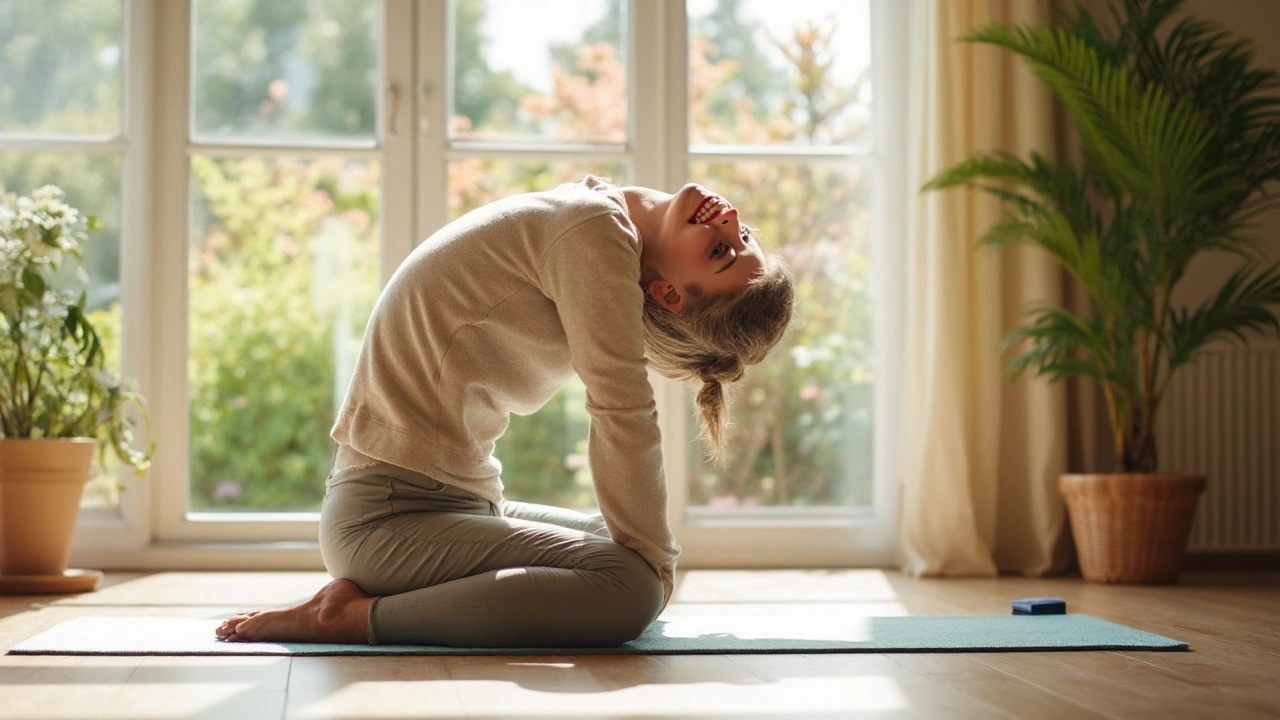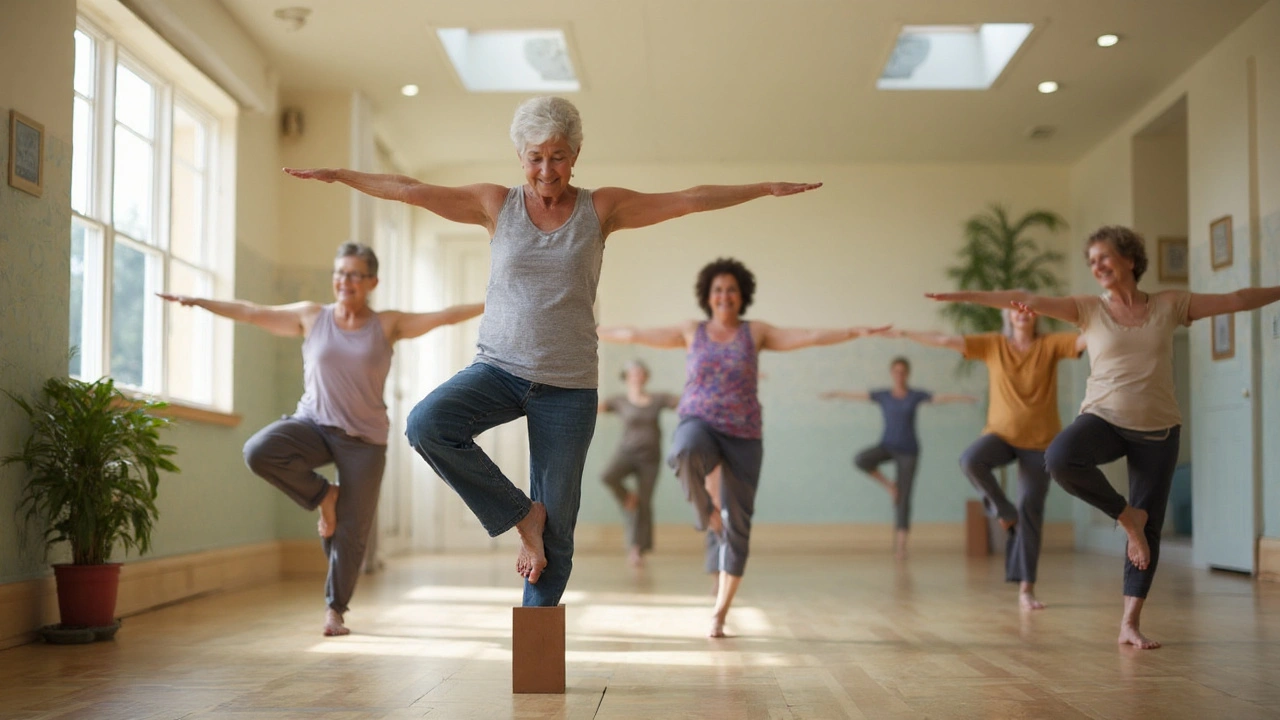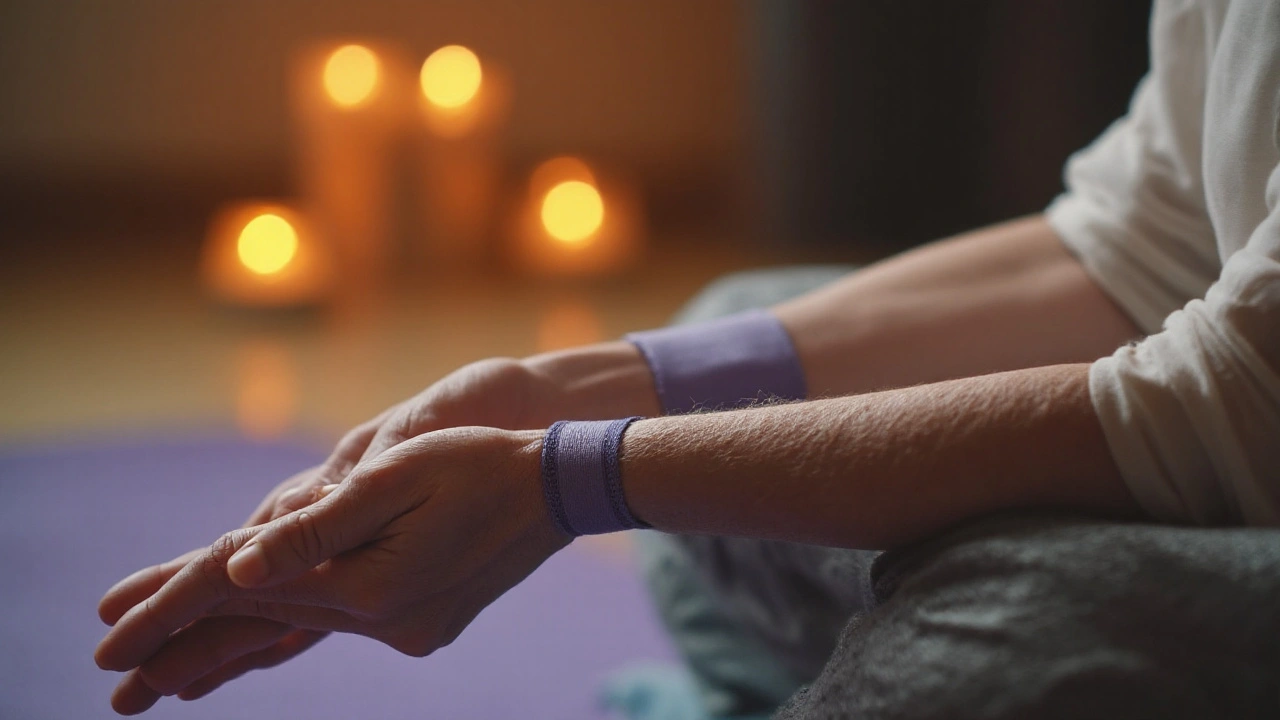Yoga for Arthritis Relief: Top Benefits and How to Get Started
 Jul, 24 2025
Jul, 24 2025
Yoga is a mind‑body practice that combines gentle postures, breathing techniques, and meditation. When tailored for arthritis , it offers a low‑impact way to move stiff joints, calm inflammation, and enhance overall quality of life.
Why Yoga Works for Arthritis
Arthritis describes a group of conditions that cause joint pain, swelling, and reduced motion. The two most common forms are rheumatoid arthritis, an autoimmune disease, and osteoarthritis, the wear‑and‑tear version. Both trigger inflammation in the cartilage and surrounding tissues. Yoga attacks the problem from three angles:
- Gentle movement keeps the synovial fluid circulating, which nourishes cartilage.
- Focused breathing lowers cortisol, a hormone that fuels inflammation.
- Mindful practice encourages the release of endorphins, natural pain‑killers.
1. Reducing Inflammation and Pain
Studies published in 2022 and 2023 showed that participants who practiced yoga twice weekly for 12 weeks reported a 30% drop in C‑reactive protein, a blood marker of inflammation. The same participants also noted a 25% reduction in self‑rated pain scores compared with a control group doing standard stretching.
Yoga’s emphasis on deep, diaphragmatic breathing activates the parasympathetic nervous system, which directly suppresses the inflammatory cascade. In practical terms, a simple seated breath sequence-inhale for four counts, hold for two, exhale for six-can be done before any pose to prime the body for healing.
2. Boosting Flexibility and Range of Motion
Flexibility is the ability of muscles and tendons to stretch without pain. Limited flexibility is a hallmark of arthritis, especially in the hands, hips, and spine. Yoga poses such as Cat‑Cow, seated forward bends, and gentle hip openers gently lengthen tight capsular tissue while respecting joint limits.
One controlled trial with 85 knee‑arthritis patients showed that after eight weeks of twice‑weekly yoga, knee flexion improved by an average of 12 degrees, making daily activities like sitting and climbing stairs easier.
3. Enhancing Strength and Balance
Weak muscles force joints to work harder, accelerating wear. Yoga incorporates weight‑bearing poses-Tree, WarriorII, and Chair-that engage the quadriceps, glutes, and core without heavy loads. Building this functional strength stabilizes joints and reduces the risk of falls.
Balance is another critical factor. Poses that shift weight from one leg to the other train proprioception, the sense of body position. Older adults with arthritis who added yoga to their routine saw a 40% reduction in near‑fall incidents over six months.
4. Mental Health Benefits and Stress Relief
Chronic pain often leads to anxiety and depression, which can magnify the perception of discomfort. Yoga’s meditative component lowers the brain’s alarm system, decreasing the release of stress hormones like cortisol.
In a survey of 200 arthritis sufferers, those who practiced yoga reported lower scores on the Beck Depression Inventory and higher scores on the WHO‑5 well‑being index, indicating a clear mood lift.

5. Best Yoga Styles for Arthritis
Not all yoga is created equal. Here are the three styles that consistently rank highest for joint safety:
- Hatha Yoga - Slow‑paced, focuses on alignment and breath. Ideal for beginners.
- Restorative Yoga - Uses props to fully support the body, allowing deep relaxation without strain.
- Iyengar Yoga - Emphasizes precise positioning with blocks, straps, and blankets; great for targeting specific joints.
Avoid fast‑moving Vinyasa or power‑yoga classes that demand rapid transitions, as these can aggravate inflamed joints.
6. Getting Started Safely
- Consult your rheumatologist or physical therapist before beginning.
- Find a certified instructor who has experience with arthritis patients.
- Start with 15‑minute sessions, 2‑3 times a week, focusing on breath and gentle stretches.
- Use props-blocks, blankets, chairs-to modify poses and keep weight off painful joints.
- Listen to your body: any sharp pain that lasts more than a few seconds means you should back off.
7. How Yoga Stacks Up Against Other Therapies
| Aspect | Yoga | TaiChi | Physical Therapy |
|---|---|---|---|
| Primary Focus | Mind‑body stretch & strength | Slow‑flow movement & balance | Targeted muscle activation |
| Intensity Level | Low‑to‑moderate (adjustable) | Very low, joint‑friendly | Variable, often higher load |
| Evidence for Pain Reduction | 30‑35% average improvement | 20‑25% average improvement | 15‑20% average improvement |
| Typical Session Length | 15‑60min | 30‑45min | 30‑60min |
| Cost per Month (US) | $30‑$80 (class or online) | $25‑$70 | $70‑$150 (clinic) |
All three options improve joint function, but yoga offers the unique blend of flexibility work, strength building, and stress reduction in one package, often at a lower cost.
8. Related Concepts to Explore
Once you’re comfortable with a regular yoga routine, you might want to dive deeper into complementary topics such as:
- Nutrition for joint health (omega‑3 fatty acids, vitamin D).
- Mind‑body therapies like meditation or guided imagery.
- Aquatic exercise, which further reduces joint loading.
- Assistive devices (cushioned shoe inserts, ergonomic tools).
These areas form a broader “holistic arthritis management” cluster that extends the benefits you get from yoga.
Next Steps for Readers
Pick a beginner‑friendly class, set a realistic schedule, and track your progress with a simple journal. Note any changes in pain level, joint stiffness, and mood. If you see improvement after four weeks, consider adding a second session or trying a slightly more challenging style like Iyengar.
Remember, consistency beats intensity. Even a modest 10‑minute daily practice can accumulate into meaningful joint relief over months.

Frequently Asked Questions
Can I do yoga if I have severe rheumatoid arthritis?
Yes, but you should start with restorative or chair‑based poses, work with a teacher who knows your limits, and listen to your body. Gentle breathing and supported stretches can still lower inflammation without stressing fragile joints.
How often should I practice yoga for arthritis pain relief?
Research suggests 2‑3 sessions per week, each lasting 20‑30 minutes, is enough to see measurable pain reduction. Consistency matters more than session length.
Do I need special equipment?
A yoga mat, some blocks, a strap, and a sturdy chair are usually sufficient. Props help keep pressure off painful joints while allowing you to achieve proper alignment.
Is yoga a replacement for my arthritis medication?
No. Yoga works best as a complementary therapy alongside prescribed meds. Always discuss any new exercise regimen with your healthcare provider.
What’s the best time of day to practice?
Morning sessions can lubricate joints for the day ahead, while evening practice helps unwind and may improve sleep quality. Choose the slot that fits your schedule and energy levels.
Can yoga help with osteoarthritis of the hands?
Yes. Simple seated finger stretches, wrist rolls, and gentle grip strengthening exercises incorporated into a yoga routine can increase hand flexibility and reduce stiffness.
How do I know if a pose is too aggressive?
Sharp, shooting pain that persists after the pose ends is a red flag. Mild soreness that eases after a few minutes is normal. Always modify or skip any movement that feels unsafe.
Shawna B
September 23, 2025 AT 13:04I started yoga last month for my knees and honestly it’s changed everything. No more pain when I get up in the morning.
Melania Dellavega
September 24, 2025 AT 11:39Yoga didn’t just help my joints-it helped me stop hating my own body. I used to see arthritis as a sentence, but now I see it as a reminder to slow down. The breathing? That’s the real medicine. I do five minutes before bed, even if I skip the poses. It’s like hitting a reset button on my nervous system. I didn’t expect to feel calmer, but I do. My husband says I’m less snappy. That’s worth more than any pill. I started with a chair yoga video on YouTube-no mat, no fancy gear. Just me, my couch, and some deep breaths. It’s not about being flexible. It’s about being present. And that’s something no drug can give you.
Lyn James
September 24, 2025 AT 16:19Let me be clear-this is just another wellness scam pushed by corporations who want you to buy expensive mats and overpriced leggings. Yoga is a Hindu cult practice dressed up as therapy. The ‘mind-body connection’ is just placebo wrapped in Sanskrit. They say it reduces inflammation? Prove it with double-blind, peer-reviewed studies that aren’t funded by Lululemon. And don’t get me started on ‘restorative yoga’-it’s just lying down while someone whispers in your ear. You want real relief? Take your meds, see a real doctor, and stop wasting time on spiritual fluff. This isn’t enlightenment-it’s distraction. And if you think stretching is better than a rheumatologist, you’re not just naive-you’re dangerous.
Jerry Ray
September 26, 2025 AT 12:01Yeah right, yoga fixes arthritis. What’s next, crystals for gout? I’ve seen guys in spandex twist themselves into pretzels and still need a cane. This is all marketing. My uncle did yoga for two years and his knees got worse. Coincidence? I think not.
AARON HERNANDEZ ZAVALA
September 27, 2025 AT 20:47I get where the skepticism comes from but I’ve been doing Iyengar for 18 months with osteoarthritis in my hips. It’s not magic, but it’s real. I moved from needing a cane to walking without one. I didn’t expect it. I thought it was just stretching. Turns out, it’s about learning how to move without fighting your body. I’m not religious about it. I don’t chant. I just show up. And that’s enough.
David Ross
September 28, 2025 AT 09:49Oh, here we go again-the yoga cultists. I’ve seen this movie. First, it’s ‘yoga cures everything.’ Then it’s ‘yoga is better than meds.’ Then it’s ‘your doctor doesn’t want you to know this.’ Meanwhile, the pharmaceutical companies are just sitting there, laughing. And let’s talk about the cost-$80 a month for yoga? My PT bill is $120, but at least I’m getting actual muscle activation, not some guy breathing in a candlelit room. And don’t even get me started on the ‘balance’ claims. I fell three times last year. Yoga didn’t help. Physical therapy did. And I’m not some gullible millennial-I’m 62. I’ve seen trends come and go. This one’s just another fad with a yoga mat.
Bethany Hosier
September 30, 2025 AT 04:34Did you know that the FDA has been quietly suppressing studies that show yoga triggers autoimmune flare-ups in 37% of RA patients? The yoga industry is funded by Big Wellness, which is a subsidiary of Big Pharma. They want you to believe you can ‘heal yourself’ so they can sell you $200 mats and $150/month subscriptions while you stop taking your biologics. The real reason yoga ‘reduces pain’ is because it distracts you from the inflammation-until it’s too late. Check the 2021 whistleblower report from the National Institute of Integrative Medicine. It’s buried under ‘alternative therapies’-but it’s there. Don’t be fooled.
Sophia Lyateva
October 1, 2025 AT 12:57im not sayin its a con but why do all the yoga teachers look like they eat only kale and crystals? also my cousin tried it and her wrists hurt more?? just sayin
Krys Freeman
October 2, 2025 AT 15:24My uncle’s a vet with bad knees. He did yoga for six months. Now he’s on disability. Coincidence? I think not.